
Figure-8 Eliminator Trailer
USER'S GUIDE & SAFETY MANUAL
CONDUX

2
Read and understand all procedures and safety instructions before using a Condux Figure-8 Eliminator
Trailer. Observe all safety information on this page and note specific safety requirementsas explained
by procedures in this manual. Failure to follow these instructions could result in serious personal injury
or death.
Important Safety Notice
ADVERTENCIA:
Favor de leer y comprender todas las instucciones de operación y seguridad antes de usar la máquina. Si
Ud. no comprende las instrucciones favor de consultarle a su jefe.
READ MANUAL
FIRST
If you have questions on:
SAFETY - OPERATIONS - APPLICATIONS
CALL 1-800-533-2077
Save this user’s guide for future reference.
COMMUNICATIONS WITH THE MANUFACTURER
For any information related to the machine (use, maintenance, spare parts) always state Model, Serial
Number, Manufacturing Year and Order. This data can be found in the machine identification table.
Manufacturer:
Condux International Inc.
145 Kingswood Rd
Mankato, MN 56002-0247
1-507-387-6576
Fax 1-507-387-1442
Internet: http://www.condux.com
E-mail: [email protected]
CONDUX

3
Table of Contents
1
2
5
6
7
9
8
Technical Specifications . . . . . . . . . . . . . . . . . . . . . . . . . . . . . . . . . . . . . . . . . . . 4
Safe Operating Procedures. . . . . . . . . . . . . . . . . . . . . . . . . . . . . . . . . . . . . . . . . 6
Jobsite Set-Up Guidelines. . . . . . . . . . . . . . . . . . . . . . . . . . . . . . . . . . . . . . . . . . 7
Electronic Control Features and Operation . . . . . . . . . . . . . . . . . . . . . . . . . . . . . 8
A. Hand-Held Wired Remote Controller. . . . . . . . . . . . . . . . . . . . . . . . . . . . 8
B. Electronic Machine Controller . . . . . . . . . . . . . . . . . . . . . . . . . . . . . . . . 10
C. Filters, Gate and Emergency Stop Details . . . . . . . . . . . . . . . . . . . . . . 10
Prepare for Operation . . . . . . . . . . . . . . . . . . . . . . . . . . . . . . . . . . . . . . . . . . . . 12
Load Cable . . . . . . . . . . . . . . . . . . . . . . . . . . . . . . . . . . . . . . . . . . . . . . . . . . . . 16
Power Winding . . . . . . . . . . . . . . . . . . . . . . . . . . . . . . . . . . . . . . . . . . . . . . . . . 20
Unload Cable . . . . . . . . . . . . . . . . . . . . . . . . . . . . . . . . . . . . . . . . . . . . . . . . . . 22
Prepare for Transport . . . . . . . . . . . . . . . . . . . . . . . . . . . . . . . . . . . . . . . . . . . . 23
Service and Maintenance . . . . . . . . . . . . . . . . . . . . . . . . . . . . . . . . . . . . . . . . . 24
Troubleshooting Guide . . . . . . . . . . . . . . . . . . . . . . . . . . . . . . . . . . . . . . . . . . . 24
Appendices. . . . . . . . . . . . . . . . . . . . . . . . . . . . . . . . . . . . . . . . . . . . . . . . . . . . 25
A. Parameters Settings. . . . . . . . . . . . . . . . . . . . . . . . . . . . . . . . . . . . . . . 25
B. Replacement Parts. . . . . . . . . . . . . . . . . . . . . . . . . . . . . . . . . . . . . . . . 26
Warranty Information. . . . . . . . . . . . . . . . . . . . . . . . . . . . . . . . . . . . . . . . . . . . . 27
3
4
10
11
12
13

Technical Information
The Condux Figure-8 Eliminator Trailer is designed to greatly reduce cable splicing
and the need to manually “figure-eight” cable by allowing longer continuous runs
when no cable end is available. The Trailer removes cable from a cable reel, and
then dispenses it.
This unit is not intended for use where cable ends are available, nor is it a device for
transporting cable.
Do not figure-eight any dual strength member fiber optic cable using the Condux
Figure-8 Eliminator Trailer. Condux will not warranty or be held liable for any cable
damage resulting from the use of dual strength member fiber optic cable on the
Condux Figure-8 Eliminator Trailer.
In addition, the Condux Figure-8 Eliminator Trailer can be used as a hydraulic power
source in tandem with a Condux Fiber Optic Cable Blower.
• Figure 8 Eliminator trailer used to eliminate the need to manually figure-eight
fiber optic cable.
• Electronic control system to control all functions of the trailer.
• Single person operation.
• Drum and arm assembly fully enclosed (four sides) by safety cages.
• Cable to be loaded from ground level without having to climb into
trailer - access doors through safety cages.
• Storage for remote controller and its harness.
• Freewheel mode with variable drag - adjustable through electronic controls.
Used when cable is being pulled off the drum by the FO Blower.
• Arm assembly can be free wheel by switching on the solenoid.
• All components to be made of non-corrosive materials or be plated
or painted.
• Arms must be locked into position during transport to prevent the beam
from fatiguing.
• Trailer is to be used for handling cable in a figure 8 situation only. Not for
transporting cable. Occasional transport of cable may be required to
reposition the trailer on the job site.
B. CABLE HANDLING SPECIFICATIONS
• Maximum cable diameter of 1.05 inch.
• Theoretical cable pulling tension of 187 lbs.
• Minimum bend radius of 20 times the cable diameter through the guide roller
blocks (20 * 1.05 = 21" bend radius).
• Minimum drum diameter 42 inches.
• Average cable loading speed 612 ft/ min or 40 RPM.
• Roller blocks can be easily operated with one hand.
• Cable capacity of 44000 ft of 1/2" cable, 20,000 ft of 3/4" cable, 11000 ft of
1.05" cable.
C.TRAILER SPECIFICATIONS
• Dual axle, rated for 12,000 lb capacity.
• Electric brake or surge brake.
• Pintle ring hitch for electric brake and ball hitch for surge brake.
• Dual safety chains, minimum 10,000 lb capacity
4
GENERAL SPECIFICATIONS
Figure-8 Eliminator
Trailer
Used to eliminate the need to manually figure-eight fiber optic cable.
Electronic Control
System
Control all functions of the trailer.
Drum & Arm Assembly
Fully enclosed on all four sides by safety cages.
Loading Cable
Loaded from ground level without having to climb into trailer - access doors through
safety cages.
Freewheel Mode with
Variable Drag
Adjustable through electronic controls, used when cable is being pulled off the drum by
Fiber Optic Blower.
Arm Assembly
Can be freewheel by switching on the disengage arm switch.
Arm Placement
Arms must be locked into position during transport to prevent the beam from fatiguing.
Trailer to be used for handling cable in figure-8 situation only. Not for transporting
cable.
Roller Block Operation
Easily operated with one hand.
CABLE HANDLING SPECIFICATIONS
1.05" (26.67 mm)
Maximum Cable
Diameter
48,000 ft of 1/2" diameter cable (15 km of 13 mm cable)
31,000 ft of 5/8" diameter cable (10 km of 16 mm cable)
Cable Capacity
Arm Speed
Stabilizer Jacks
Manual outrigger jacks.
40 RPM
22,000 ft of 3/4" diameter cable (7 km of 19 mm cable)
16,000 ft of 7/8" diameter cable (5 km of 22 mm cable)
12,000 ft of 1" diameter cable (4 km of 25 mm cable)
Minimum Drum
Diameter
Cable Loading Speed
42" (1,067 mm)
Maximum speed is 785 ft/min (239 m/min) on a full drum, Maximum speed is 440 ft/min
(134 m/min) on an empty drum
Max. Cable Loading
Tension
Minimum Bend Radius
20 times the cable diameter through guide roller (20 x 1.05= 21" (533 mm) bend radius)
160 lb. (712 N)
Trailer to be used for
Handling Cable
1.

5
OUT OF RANGE
OUT OF RANGE
• Full DOT approved lighting package with reflective tape
• Front tongue jack, rated for 7,000 lb capacity.
• Target trailer weight 5,500 lb.
• Trailer width of 8' ft.
• Spare tire included.
• Maximum tongue weight 500 lb.
D. HYDRAULIC SPECIFICATIONS
• 16 HP gasoline engine set at 3000 RPM (16 HP diesel engine is an option).
• 8.4 cc or 0.51 cu. in. Sunstrand pump is used to generate up to 6.5 GPM fo
hydraulic fluid.
• System pressure is set at 2500 psi on the apitech valve.
• 12 Gallon fuel tank estimated to last up to 12 hours of operation.
• Hydraulic oil sight gauge is mounted on hydraulic tank to monitor oil level.
• A 5 micron high pressure and 10 micron low filter are used to keep the
hydraulic oil clean. Both filters will indicate on the ECB when elements
are plug.
• Apitech valve controlled (ECB controlled) hydraulic ME-24 Ross motor to
drive arms. Motor to have pulse sensor (30 pulses per rev).
• Apitech valve controlled (ECB controlled) 56 inches hydraulic cylinder to
move drum. Drum to have potentiometer mounted to provide signal feedback
on drum location.
• 2500 psi, 6.5 gpm external hydraulic circuit, controlled by Apitech valve
(ECB controlled). Plumbed at rear of trailer with quick connects for
Condux FO Blower.
• Thermostatic control valve is used on the inlet of the cooler to prevent
hydraulic fluid flowing through 7.8 HP cooler when the temperature has yet
to reach 100 C.
E. ELECTRONIC CONTROL SYSTEM SPECIFICATIONS
Contained within a separate set of documents:
• Remote Electronic Control Box Specification: K:\PRODUCT\Product Dev
Projects\1995\95—52 Figure 8 Trailer\Electronic Controls\Electronic
functions.lwp
• Machine Electronic Control Box Specification: K:\PRODUCT\Product Dev
Projects\1995\95—52 Figure 8 Trailer\Electronic Controls\Machine Control
Panel.lwp
F. ELECTRICAL / ELECTRONIC SPECIFICATIONS
• 12 volt DC electrical system.
• Two12 VDC battery.
• A 20 ampere attenuettor is used to generate enough power for the
electrical system.
• Throttle, free wheel, strobe lights, work light, blower and controller switches
with fuse are place on the control panel.
• Glow plug is offer for diesel engine.
• Hour meter, emergency switch, hydraulic system pressure, fuel gauge choke
and push start button are also place on the control panel.
• Two strobe and four clearance lights are offered to satisfy the DOT
specification.
Mounts
For remote in/near control panel, also a mount on the Fiber Optic Cable Blower for the
remote.
Controls: throttle, arm disengage, strobe lights, work light, blower and controller
switches with fuses, also the hour meter, emergency stop switch, hydraulic system
pressure, fuel gauge, choke and push start button.
Glow Plug
Charges through main system, and it is isolated by a diode to prevent drawing from this
power supply for the work light, strobe lights, starter, blower, free wheel solenoid and
throttle.
Storage Area
Secured, weather resistant, and shock absorbing for the remote control and 65' (20 m)
of control cable.
Limit Switches
On all openings and tipping gates
Rear Electric Turk
Connector
To power to Fiber Optic Cable Blower
Tongue Weight
Engine
ELECTRICAL / ELECTRONIC SPECIFICATIONS
Electrical System
12 volt DC
System Pressure
3,000 psi (207 bar)
600-650 lb. (272-295 kg)
12 Gallon (45 liters) estimated to last up to 12 hours of operation
Filtration
TRAILER SPECIFICATIONS
Dual axle, rated for 12,000 lb. (5,443 kg) capacity
Electric
Pintle ring hitch for electric brake
Axle
Brakes
Hitch
Full DOT approved lighting package with reflective tape
Rated for 7,000 lb. (3,175 kg) capacity
6,500 lb. (2,948 kg)
8' (2.44 m) wide x 9' 6" (2.90 m) high x 21' 6" (6.55 m) long
Isolated 12 VDC Power
Supply for ECB
Used on inlet of the cooler to prevent hydraulic fluid flowing through 7.8 HP (5.8 kW)
cooler when temperature has yet to reach 100 C.
5 Micron high pressure and 10 micron low pressure filters used to keep hydraulic oil
clean.
Batteries
Two 12 volt VDC Batteries
2,500 psi (172 bar), 6.5 gpm (25 lpm) external hydraulic circuit.
Offered for the diesel engine
Lights
Two strobe and four clearance lights are offered to satisfy the DOT specification. Work
light is offered to operate the machine in the dark.
Dual Safety Chains
HYDRAULIC SPECIFICATIONS
16 HP @ 3170 RPM (12 kW @ 3170 RPM) Briggs & Stratton V-Twin Vanguaard
*16 HP (12 kW) Diesel engine is an option
Plumbed at rear of trailer with quick connects for Condux Fiber Optic Blower.
Lighting
Hydraulic Flowrate
7 gpm (26 lpm)
Hydraulic Fluid Sight
Gauge With
Thermometer
Mounted on hydraulic tank to monitor fluid level and fluid temperature
External Hydraulics
Thermostatic Control
Valve
Control Panel
Fuel Capacity
Front Tongue Jack
Trailer Weight
Trailer Dimension Size
Minimum 10,000 lb (4,536 kg) capacity

6
Safe Operating Practices
Read and understand all procedures and safety instructions before using the Condux
Figure-8 Eliminator Trailer. Observe all safety information on this page and note
specific safety requirements as explained by procedures called out in this manual.
Failure to follow these instructions could result in serious personal injury, property
damage or death.
A.WORK AREA SAFETY
1. Wear personal protective equipment: hard hat, safety glasses, safety shoes, and
leather work gloves.
2. The safe operation of this equipment requires that the operators be on stable
footing.
3. Stay clear of cables or lines under tension.
4. Do not place cable spool too close to unit. Place the spool far enough away
from the unit to ensure proper control.
5. Do not tamper with relief valves or pressure reducing valves.
B. HYDRAULIC DEVICES
Escaping fluids under pressure can penetrate the skin and cause serious personal
injury. Observe the following precautions to avoid hydraulic hazards:
1. Tighten all connections before applying pressure. Relieve pressure when
connecting or disconnecting hoses when servicing the unit.
2. Check for leaks with a piece of cardboard. Do not use your hands!
3. Do not exceed working pressure of hydraulic hoses.
4. Visually inspect hoses regularly and replace if damaged.
C. ELECTRIC DEVICES
The Hand-Held Wired Remote Controller is an electrical device. Electric shock
hazards exist that could result in severe personal injury or death. Observe the
following precautions to avoid electrical hazards:
1. Do not operate in or near water. This includes setting the Hand-Held Wired
Remote Controller on a wet surface or exposing them to rain.
2. Do not remove cover of the Hand-Held Wired Remote Controller or Electronic
Machine Controller. There are no user-serviceable parts inside. Refer servicing
to qualified service personnel.
3. The Hydraulic Power Unit Controls Power Switch and Controller Power Switch
should be in the off position before connecting or disconnecting any cords.
2.

7
Jobsite Set-Up Guidelines
Time spent planning your equipment’s placement (layout) at the job site will benefit
both the operation of the equipment and the safety of your crew at the site. It is
best to determine the layout of all equipment before disconnecting, stabilizing and
leveling the Figure-8 Eliminator Trailer. Because no two job sites are the same, the
illustrations that follow should be used as general guidelines to get the most benefit
and safest operation from your Figure-8 Eliminator Trailer.
Cable Installation—First Run
Prepare Figure-8 Eliminator Trailer for Cable Loading
Load Cable to Figure-8 Eliminator Trailer
Cable Installation—Second Run
3.

8
4.
Electronic Control Features and Operation
A. HAND-HELD WIRED REMOTE CONTROLLER
Load Dial
• Controls the speed of the rotating arms from 0 rpm to maximum 40 rpm.
Load Drum button
• Moves the drum to the rear of the machine so the cable can be loaded onto
the machine.
• Stop button will stop the drum from moving and stop this function.
• Pressing the Load Drum button while the function is active will have the same
effect as pressing the Stop button.
Transport Drum button
• Moves the drum to the front of the machine for transport.
• Stop button will stop the drum from moving and stop this function.
• Pressing the Transport Drum button while the function is active will have the
same effect as pressing the Stop button.
Start / On button
• Starts the machine so the Load Dial is functional and allows the arms
to rotate.
• Stop button will stop the arms from rotating and stop this function.
• Load Dial must be turned all the way to zero (counterclockwise) in order to acti-
vate the start button. LED will flash if the Load Dial is not all the way to zero.
4 digit 7 segment LED display
• Normally displays the cable diameter in millimeters or the Drum Position.
• Also displays error codes when an error condition is encountered: FL 1-FULL
if the pressure filter is full; FL 2-FULL if the return filter is full; or door-OPEn
when one of the safety gates is open. These error conditions will flash between
the first and second words and will display for 5-10 seconds before going
back to displaying the cable diameter or Drum Position. They will cycle on
approximately every 20-30 seconds.
• An additional error code will be displayed when connected to the Condux FO
Blower and the blower has been stopped by the blower electronics: FOCB-
StOP. This error condition will flash between the first and second words and will
display as long as the trailer has been disabled by the blower. This condition
can be cleared by pressing the Stop button.

9
Stop button
• This button will stop all operations of the machine.
• LED beside button is lit when none of the other functions are operating. Also
functions as a “power on” indicator.
• If arms are rotating, they will take approximately 2 seconds to stop.
• If the Condux FO Blower has stopped the machine, pressing the Stop button will
clear the stop forced by the blower.
+ / In / Up button and - / Out / Down button
• Increments the cable diameter when the Cable Diameter LED is selected.
• Moves the Drum Position backwards or forwards while loading or
unloading cable.
Select button
• Allows selection between Cable Diameter and Drum Position.
Cable Diameter LED
• Indicates that the cable diameter can be adjusted up or down with the
+ / - buttons.
• Cable diameter can be adjusted only when NOT loading or unloading cable.
Cannot be adjusted when Load Drum or Transport Drum are operating or when
Condux FO Blower has stopped the machine.
Drum Position LED
• Drum Position can be adjusted at any time when loading or unloading cable.
• (+) Key speeds drum up, (-) key slows drum down.
• Readout on the LCD display is relative to the Drum Position on the trailer and is
not an indication of speed or distance.
LH Stab Jack & RH Stab Jack LEDs
• These functions are not used.
Drag Dial
• Controls the amount of drag on the rotating arms when in free wheel mode.
• Dial will control drag from very little drag on the arms to a very large amount
of drag.
Fiber Blower button
• Activates the external circuit that provides hydraulic fluid to the Condux
FO Blower.
• LED beside button is lit when the circuit is activated.
• Free Wheel button and function will also be activated when the Fiber Blower
button is pressed.
• Stop button will remove power from this circuit and stop this function and the
free wheel function, both LED’s will go out.
• Pressing the Fiber Blower button while the function is active will close the
hydraulic circuit and the fiber blower LED will go out, however, the Free Wheel
button and function will NOT be stopped.
Free Wheel button
• Places the trailer into free wheel mode.
• Free Wheel button and function will also be activated when the Fiber Blower
button is pressed. However, the Fiber Blower button and function will NOT be
automatically activated when the Free Wheel button is pressed.
• Stop button will stop this function and the fiber blower function.
• Pressing the Free Wheel button while the function is active will stop the free
wheel mode and the Fiber Blower will also be stopped.

B. ELECTRONIC MACHINE CONTROLLER
Refer to page 11 for a full explanation of the Electronic Machine Controller functions.
C. FILTERS, GATE & EMERGENCY STOP DETAILS
The Filters, Gate and Emergency Stop devices are connected in a fail-safe
configuration. This means, these devices require a closed contact in normal working
condition. When the circuit goes open circuit, a fault condition results. The following
illustrations indicate the expected result.
Pressure Filter
When the Pressure
Filter is contaminated
and restricts the flow of
oil, the pressure build
up in the canister will
cause the indicator
contacts to open or an open circuit condition occurs from a broken cable or
terminal, the following is displayed. The trailer will continue to operate at a
reduced performance level.
Return Filter
When the Return Filter
is contaminated and
restricts the flow of oil,
the pressure build up in
the canister will cause
the indicator contacts to open or an open circuit condition occurs from a
broken cable or terminal, the following is displayed. The trailer will continue
to operate at a reduced performance level.
Cage Gates
When the Access
Doors are opened or
the Tilt Panels are not
tilted out, or the circuit
to the Access Door
sensor is damaged, the following is displayed. The trailer will NOT continue
to operate and the condition must be corrected.
Emergency Stop
When the Emergency
Stop is activated or the
circuit to the E/Stop is
damaged the following
will be displayed. The
trailer will NOT continue to operate and the condition must be corrected.
10
Green LED
Red LED
▲▲
▲▲
▲▲
Green LED
Red LED
Green LED
Red LED
Green LED
Red LED
▲▲

11
Emergency
Stop
Safety Cage
Pressure Filter
Return Filter
Drum Circuit
Arm Circuit
Blower Circuit
Jack Circuit
FUNCTION
DESCRIPTION GREEN LED RED LED OFF
Green LED indicates that no
Emergency Stop buttons have
been pressed.
Green LED indicates that all
Access Doors are closed.
Green LED indicates that
the Pressure Filter is in good
condition.
Green LED indicates that
the Return Filter is in good
condition.
Green LED indicates that the
drum valve has been activated
and the potentiometer (position
sensor) is reading the Drum
Position.
Green LED indicates that
the arm valve (server) has been
activated and the
speed sensor is reading the
motor rotation.
Green LED indicates that
the Blower Circuit has been
activated.
This function is not used.
Red LED indicates that one of
the Emergency Stop buttons
has been pressed.
Red LED indicates that one
of the Access Doors is open or
the Tilt Panel is not tilted open.
Red LED indicates that the
Pressure Filter is full and in
need of cleaning / replacing.
The Red LED will stay lit until
maintenance is completed. The
trailer will continue to operate at
a reduced performance level.
Red LED indicates that the
Return Filter is full and in
need of cleaning / replacing.
The Red LED will stay lit until
maintenance is completed. The
trailer will continue to operate at
a reduced performance level.
Red LED will display if the drum
is not moving.
If the drum circuit has been
activated and the drum is
moving, but the red LED is
constantly lit, the potentiometer
isn’t reading a change in the
Drum Position. This would
indicate that either the
potentiometer is bad or the
valve isn’t operating.
The red LED may flash while
the drum is moving. This is nor-
mal.
Red LED will display if the
arm is not moving.
If the Arm Circuit has been
activated and the arm is moving,
but the red LED is constantly lit,
the speed sensor isn’t reading a
change in the arm position. This
would indicate that either the
speed sensor is bad or the valve
isn’t operating.
The red LED may flash while
the arm is moving. This is nor-
mal.
Both LEDs would be OFF when
the Drum Circuit isn’t activated
at all.
Both LEDs would be OFF when
the Arm Circuit isn’t activated
at all.
LED would be OFF when the
Blower Circuit isn’t activated
at all.

12
Prepare for Operation
It is essential that the Figure-8 Eliminator Trailer be properly set up before operation.
Using the following procedure will allow the unit to be set up in a short period of time
and yield optimum performance.
A. The trailer may be disconnected from the tow vehicle or left connected,
depending on your specific job site conditions.
B. Use wheel chocks (not included) to prevent trailer movement.
C. Disconnect Arm Lock. Unscrew the locking mechanism (Figure 1). Fold back
(Figure 2) and secure with safety pin (Figure 3).
Figure 2. Fold Back Arm
5.
Figure 1. Disconnect Arm Lock
Figure 3. Secure With Safety Pin

13
D. Stabilize the trailer. Use only the
adjustable leveling jacks (3 supplied) for
trailer stabilizing and leveling. Jacks
must be placed securely on jack mounts
located on the trailer frame at the rear
of the trailer and on the tongue
(Figure 4). Do not attempt to locate
jacks in any other position. To secure a
jack in position, align jack with a jack
mount and insert safety pin (Figure 5).
Raise and lower jacks by rotating
crank handle.
E. Open Tilt Panels on the safety cage by
pulling the release cable located on both
the front and rear ends (Figure 6). Lock
Tilt Panels into open position with the
attached safety pin (Figure 7).
Figure 5. Align Jack with a Jack
Mount and Insert Safety Pin
Figure 6. Open Tilt Panels
Figure 7. Lock Tilt Panels Into
Open Position
Figure 4. Jack Mounts

F. Move drum into load position
NOTE: Before starting the engine, check hydraulic fluid level, engine oil level,
and diesel/gasoline fuel level.
1. Hook up electronics. Connect both the Electronic Machine Controller
(Figure 8) and the Hand-Held Wired Remote Controller (Figure 9).
2. Start the engine using the electric start switch at the Electronic Machine
Controller panel (Figure 10).
IMPORTANT! It is critical to warm the hydraulic fluid to 100°F before
operating the machine. Hydraulic fluid temperature is indicated by a
thermometer in the engine compartment (Figure 9a).
3. Turn the controller on by using the switch at the Electronic Machine
Controller panel (Figure 10).
4. Engage the Engine Throttle. Pull out knob located on the Electronic
Machine Controller panel. Or, turn on the throttle switch (if equipped with
electronic throttle).
5. Push Load Drum button on the
Hand-Held Wired Remote Controller.
The drum will move and automatically
stop when in load position.
(See Section 4).
Figure 8. Connect Electronic
Machine Controller
Figure 9. Connect Hand-Held
Wired Remote Controller
14
Figure 9a. Hydraulic Fluid
Thermometer

15
Figure 10. Electronic Machine Controller Panel
15

16
6.
Load Cable
To begin the loading procedure the cable must be threaded and secured properly
through the fairlead assembly, quad keeper rollers, double keeper rollers, cable notch
and cable clamp. Proper cable threading is essential for a successful winding.
Because there is no “free end” of the cable at this point in the installation, a proce-
dure has been developed to thread the cable on to the drum using cable slack.
A. Open the Access Doors in the safety cage’s Tilt Panels by pulling the
release cable located on each Access Door (Figures 11 & 12).
CAUTION: Follow cable manufacturers guidelines for minimum bend radius for
cable you are using. Failure to do so may result in permanent damage to cable.
CAUTION: Do not figure-eight any dual strength member fiber optic cable using
the Condux Figure-8 Eliminator Trailer. Condux will not warranty or be held
liable for any cable damage resulting from the use of dual strength member
fiber optic cable on the Condux Figure-8 Eliminator Trailer.
B. Pull out slack from the cable reel to pass at least 20 ft. (6.1 m) beyond
the front (engine) end of the Figure-8 Eliminator Trailer (Figure 13).
C. Turn on the Arm Disengage switch on the Electronic Machine Controller
panel (Figure 10).
Figure 11. Pull Release Cable
Figure 12. Open Access Doors
Figure 13. Cable Slack

17
D. Rotate arms manually until the far rearward quad block is in a horizontal
position (Figure 14).
E. Open rear fairlead assembly (Figure
15) and lay cable in place (Figure 16).
Important! Cable is loaded from the
back of the trailer to the front using
additional cable from the cable reel,
NOT from the cable slack pulled out in
step B.
F. Open the quad keeper roller by lifting
the roller and pin from its seat
(Figure 17) and lay cable in place.
G.Close and lock the quad keeper roller
(Figure 18).
Figure 14. Position First Quad
Block Horizontally
Figure 15. Open Rear Fairlead
Assembly
Figure 17. LIft Roller And Pin
From Seat And Place Cable
Figure 18. Close and Lock Quad
Keeper Roller
Figure 16. Lay Cable In Place

18
H. Close and lock the fairlead roller assembly (Figure 19).
I. Proceed to next keeper roller on the arm. Continue to rotate arms
manually and be sure to extract cable from the reel, not from the slack
pulled out in step B.
J. Open quad keeper roller and lay cable in place as in step F. Close and
lock quad keeper roller as in step G (Figure 20).
K. Manually rotate arms to locate 3 double keeper rollers (Figure 21) in
sequence. Follow the procedure to open, lay in cable, and close as in steps
F and G (Figure 22).
L. Manually rotate arms to locate the final quad keeper roller and follow
the procedure to open, lay in cable and close as in steps F and G.
Figure 19. Close and Lock
Fairlead Roller
Figure 20. Place Cable In Next
Quad Keeper Roller
Figure 21. Locate 3 Double
Keeper Rollers
Figure 22. Place Cable In Double
Keeper Rollers

19
M. Manually spin arms around until the cable nests on the drum (Figure 23).
N. Nest cable in notch on drum (Figure 24).
O. Open cable clamp and secure cable inside (Figure 25).
P. Manually turn arms to wrap 2 complete wraps on drum.
Q. Turn off Arm Disengage switch.
R. Tighten manual wraps against front of drum (Figure 26).
S. Close Access Doors on Tilt Panels and at rear of trailer.
Figure 25. Open Cable Clamp
And Secure Cable Inside
Figure 23. Manually Spin Arms
Figure 24. Nest Cable In Notch
On Drum
Figure 26.Tighten Manual Wraps

20
Power Winding
The Condux Figure-8 Eliminator Trailer is capable of winding cable at an average
speed of 600 ft/min (179 m/min) or about 40 RPM. This productivity will vary with
cable diameter, job site layout and equipment condition.
Important! Always start the winding operation slowly, and gradually increase
speed to attain maximum operation efficiency and cable safety.
The power winding procedure requires fluent use of both electronic controllers, the
Electronic Machine Controller and the Hand-Held Wired Remote Controller. Review
the features and functions of the electronic controllers in Section 4 of this manual
before beginning the power winding operation.
The drum moves a distance of one cable
diameter for every rotation of the arm
during power winding. It may be
necessary to make minor adjustments in
the speed of the drum movement during
winding to ensure cable nests neatly on
the drum (Figure 27). Note that the cable
being placed needs to be slightly behind
the cable wrapped on the drum to keep
wraps tight (Figure 27).
Important! Large spaces between
cable or overlapping of cable will
compromise the unloading procedure
(Section 8) or may cause the drum to
fill prematurely. Use the following
corrective actions when needed to
keep even wraps of cable on the drum.
Overlapping Cable: While loading, you
may double the speed of the drum for
every rotation of the arm by pressing the
(+) key on the Hand-Held Wired Remote
Controller. This means the drum will
move 2 cable diameters for every rotation
of
the arm.
Space Between Cable: While loading you
may half the speed of the drum for every
rotation of the arm by pressing the (-) key
on the Hand-Held Wired Remote
Controller. This means the drum will
move 1/2 a cable diameter for every rota-
tion of the arm.
Follow steps A through H for trouble-free
Power Winding (Cable Loading) operation.
7.
Figure 27. Proper Cable Winding
Page is loading ...
Page is loading ...
Page is loading ...
Page is loading ...
Page is loading ...
Page is loading ...
Page is loading ...
Page is loading ...
-
 1
1
-
 2
2
-
 3
3
-
 4
4
-
 5
5
-
 6
6
-
 7
7
-
 8
8
-
 9
9
-
 10
10
-
 11
11
-
 12
12
-
 13
13
-
 14
14
-
 15
15
-
 16
16
-
 17
17
-
 18
18
-
 19
19
-
 20
20
-
 21
21
-
 22
22
-
 23
23
-
 24
24
-
 25
25
-
 26
26
-
 27
27
-
 28
28
Briggs & Stratton Figure-8 User manual
- Type
- User manual
- This manual is also suitable for
Ask a question and I''ll find the answer in the document
Finding information in a document is now easier with AI
Other documents
-
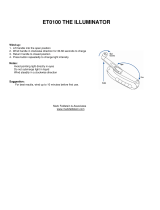 Mark Feldstein & Assoc ET0100 User manual
Mark Feldstein & Assoc ET0100 User manual
-
 Condux Conduit Adapters Owner's manual
Condux Conduit Adapters Owner's manual
-
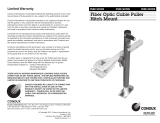 Condux Fiber Optic Cable Puller Hitch Mount Owner's manual
Condux Fiber Optic Cable Puller Hitch Mount Owner's manual
-
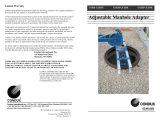 Condux Adjustable Manhole Adapter Owner's manual
Condux Adjustable Manhole Adapter Owner's manual
-
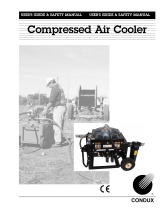 Condux Compressed Air Cooler Owner's manual
Condux Compressed Air Cooler Owner's manual
-
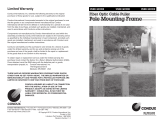 Condux Pole Mounting Frame Owner's manual
Condux Pole Mounting Frame Owner's manual
-
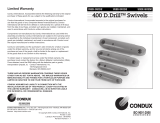 Condux 400 D. Drill Directional Drilling Swivels Owner's manual
Condux 400 D. Drill Directional Drilling Swivels Owner's manual
-
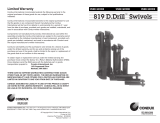 Condux 819 D. Drill Directional Drilling Swivels Owner's manual
Condux 819 D. Drill Directional Drilling Swivels Owner's manual
-
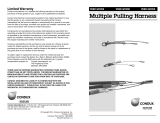 Condux Multiple Pulling Harness Owner's manual
Condux Multiple Pulling Harness Owner's manual
-
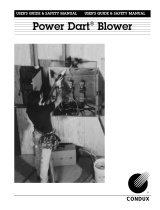 Condux Power Dart Owner's manual
Condux Power Dart Owner's manual





































